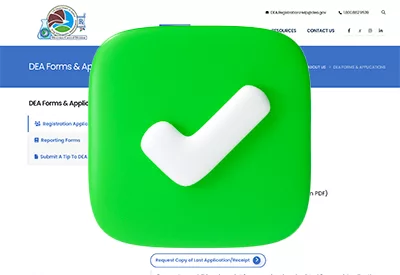Home » Current Pharmacological Treatment of Dementia
Current Pharmacological Treatment of Dementia
October 1, 2013
From The Carlat Psychiatry Report
Cary S. Gunther, PhD
Neurologist and psychiatrist in private practice, Voluntary Faculty, New York Presbyterian-Weill Cornell Medical Center
Dr. Gunther has disclosed that she has no relevant financial or other interests in any commercial companies pertaining to this educational activity.
Patients with dementia and their families may express frustration about the limited number of options for improving cognitive symptoms, but they are not without choices. Here we will review a number of pharmacological treatment options for Alzheimer’s disease (AD) and other major types of dementia.
Cholinesterase Inhibitors
The use of cholinesterase inhibitors in treatment of dementia is based on the cholinergic hypothesis, which suggests that deficits in cholinergic neurotransmission (caused by death and dysfunction of neurons that use acetylcholine) are responsible for much of the cognitive decline in dementia, particularly in AD (Bartus D et al, Science 1982;217(4558): 408–414). Cholinesterase inhibitors block the enzyme that breaks down acetylcholine in synapses, yielding higher concentrations of this neurotransmitter for longer periods of time. Four medications in this class are approved for use in dementia treatment: tacrine (Cognex), donepezil (Aricept), rivastigmine (Exelon), and galantamine (Razadyne). Tacrine is rarely, if at all, used at present because of dose-related hepatotoxicity that has not been seen with the other agents.
Donepezil is available in 5 mg and 10 mg tablets and is approved for all stages of AD. The 10 mg dose has been established as more effective than the 5 mg dose.
The lower dose pill is ideally used for a month before increasing to 10 mg so as to minimize side effects during initiation of therapy. A 23 mg dose is also available for patients with moderate to severe AD who have been maintained on 10 mg.
Rivastigmine comes in oral tablets or as a daily transdermal patch. The oral formulation is associated with greater gastrointestinal upset so is less commonly used. Patch doses are 4.6 mg, 9.2 mg, and 13.3 mg. The 4.6 mg patch is intended as a titration, rather than maintenance, dose, with increase to 9.2 mg after four weeks and possible further increase after an additional four weeks. Rivastigmine undergoes largely extrahepatic metabolism and so has relatively few pharmacokinetic interactions with other meds. It is also marketed for dementia secondary to Parkinson’s disease (PD).
Galantamine is available as 8 mg and 16 mg tablets, with 16 mg established as an effective dose. This medication is also available in sustained-release formulation, up to 24 mg per day. Doses are increased at four week intervals.
Side effects of cholinesterase inhibitors can include gastrointestinal disturbances (nausea, vomiting, diarrhea), muscle cramps, vivid dreams or insomnia, and rhinorrhea. GI upset is significantly more prevalent at the highest doses and it is not uncommon for patients to need to return to a lower dose when this occurs. Rarely, these medications can produce bradycardia; however, it can be symptomatic when present. Be careful of these drugs in patients with supraventricular cardiac conduction defects (reviewed in Schneider LS, Continuum 2013;19(2):339–357).
How Well do They Work?
Donepezil and galantamine, in particular, may provide benefit in treatment of vascular cognitive impairment in addition to AD, although no member of the class has an FDA indication for treatment of vascular dementia. Nonetheless, cholinesterase inhibitors may yield behavioral benefits and improved activities of daily living (ADLs) in this population (reviewed in Gorelick PB and Nyenhuis D, Continuum 2013;19(2):425–437).
Cholinesterase inhibitors as a class yield modest cognitive benefits in dementia patients that have largely been demonstrated over six months to one year (reviewed in Birks J, Cochrane Database Syst Rev 2006;1:CD005593).
You may wish to explain to patients and families that these medications are intended to stabilize current function and defray cognitive losses and that actual reversal of deficits is unlikely. There is no reason to combine medications from this class, and the choice among members of the class may be based on side effects profiles, pill burden or formulary constraints. Head to head comparisons among cholinesterase inhibitors have not been done.
Memantine
Memantine (Namenda) acts as an antagonist at NMDA glutamate receptors and is thought to work by preventing glutamate-induced neurotoxicity. This medication is FDA approved for treatment of moderate to severe AD. Its efficacy has been demonstrated in patients already taking cholinesterase inhibitors, and this is how it is primarily intended to be used. However, memantine can be given to patients not taking cholinesterase inhibitors, for example, if tolerability of cholinesterase inhibitors is poor.
The effects of memantine were demonstrated using tests of severe impairment and measurements of ADLs, rather than cognitive tests that highlight milder degrees of cognitive impairment (reviewed in Schneider ibid).
Dosing of memantine begins with 5 mg daily and reaches 10 mg twice daily over the course of a month. A 28 mg sustained-release dose has been FDA approved but not yet marketed. Infrequent side effects include headache, somnolence, and dizziness. Significant sleepiness at the higher end of dose titration may necessitate discontinuation or decrease.
As with cholinesterase inhibitors, the cognitive benefits of memantine are modest and seen over six to 12 months. Perhaps the goal of treatment with this medication is best explained to patients as a delay in cognitive decline of up to a year. Memantine is not well studied in vascular cognitive impairment but some studies have suggested benefit (reviewed in Gorelick PB and Nyenhuis D, Continuum 2013;19(2):425–437).
Treatment of Sleep Disturbance
Insomnia and disrupted sleep are common findings in all types of dementia. Treatment of these complaints is complicated by the greater sensitivity of elderly and cognitively impaired individuals to excessive sedation, as well as disinhibition and side effects that can accompany commonly used GABAnergic agents such as benzodiazepines and zolpidem (Ambien).
Options include melatonin, which has been shown to be effective in dementia (Mayer G et al, Sleep Med Rev 2011;15(6):369–378), and trazodone (Oleptro, Desyrel). As an alpha-adrenergic antagonist, trazodone may cause orthostasis at higher doses, but it may be particularly helpful for agitated and disturbed behavior in frontotemporal dementias (FTD) (reviewed in Mendez MF, Front Neurol Neurosci 2009;24:168–178).
Depression in Dementia
Depressive symptoms are common in vascular dementia and AD as well as in PD, which can commonly produce a dementia syndrome. It may be difficult to establish a firm diagnosis of depression, because symptoms such as poor concentration and loss of interest in activities can often be attributed directly to dementia. Moreover, in a geriatric population, somatic and neurovegetative complaints may predominate over subjective complaints of low mood.
Nonetheless, depressive symptoms warrant attention. SSRIs are generally first line because of their safety profile. Avoid MAOIs, tricyclics, and other agents with significant anticholinergic burden as these may increase confusion.
It is important to think about distinguishing depression from apathy and abulia that are direct products of neurodegenerative diseases and are often more distressing to caregivers than to patients. For this purpose, consider antidepressants with dopaminergic properties, such as sertraline (Zoloft) and bupropion (Wellbutrin), or judicious use of stimulants (Burke A et al, Continuum 2013;19(2):382–396).
Parkinsonian Symptoms
Parkinsonian symptoms may be seen in later stages of any dementia. They are often present in frontotemporal degeneration and, of course, in the “Parkinson’s-plus” syndromes corticobasal degeneration (CBD), progressive supranuclear palsy (PSP), and dementia with Lewy bodies (DLB). These Parkinsonian symptoms are generally less responsive to medications than are the motor symptoms of idiopathic PD. Options include levodopa/carbidopa (Sinemet) and dopamine agonists.
Beware of side effects such as compulsive behaviors and hallucinations when using dopamine agonists. When Parkinsonian syndromes require treatment, you will want to seriously consider partnering with a neurologist experienced in dosing these medications (Seltman RE and Matthews BR, CNS Drugs 2012;26(10):841–870).
Agitation and Psychosis
No agents have been approved for the specific treatment of agitation in dementia patients. Nevertheless, behavioral disturbances are common and warrant treatment for the comfort or safety of the patient as well as the maintenance of a safe environment for caregivers. The first line is to use agents already established for use in AD: cholinesterase inhibitors and memantine, which may ameliorate aggression and psychotic behavior even when cognitive benefits are not noticeable (Trihn, NH et al, JAMA 2003;289(2):210–216; Cummings, JL et al, Neurology 2006;67(1):57-63).
Cholinesterase inhibitors appear to show behavioral benefits in dementia with Lewy bodies as well (reviewed in Wild, R, et al, Cochrane Database Syst Rev 2003;3:CD003672). SSRIs are sometimes used in FTD to decrease disinhibition and compulsive behaviors (reviewed in Mendez, MF, Front Neurol Neurosci 2009;24:168–178). Use of mood stabilizers or antiepileptics has limited evidence support and often generates more side effects.
In the acute setting, antipsychotics may be necessary, though their use is problematic as well. First and second generation antipsychotics alike carry the infamous “black box warning” for risk of sudden cardiac death in the elderly, and may cause sedation, orthostasis, and falls. These agents can be difficult to discontinue but attempts should be made to do so anyway. They are not a substitute for behavioral interventions (see Burke et al, op.cit.).
Elderly patients are more susceptible than the general population to parkinsonian effects of antipsychotics, and these agents must be used sparingly, and not at all if DLB is suspected. Quetiapine (Seroquel) is often the agent of choice and doses as low as 12.5 mg may be appropriate (Ballard C et al, Lancet 1998;351(1908):1032–1033).
The Future of Dementia Treatment
Although no new medications for treatment of dementia have come to market in several years, this is certainly a field of active research. Current avenues of investigation include immunization-based approaches (passive immunization as well as attempts at vaccine development); compounds that would inhibit the aggregation or activity of the Tau protein, which plays a role in AD as well as FTD; modulation of the synthesis or processing of amyloid; and treatments aimed at addressing the brain insulin resistance that has been observed in AD.
Although trials of some agents have been halted because of weak results, there are still additional compounds under study, and some existing approaches are being modified to see if specific subgroups of dementia patients may respond.
TCPR’s Verdict: No pharmacological cure for dementia currently exists, but treatment options are numerous. Cholinesterase inhibitors and memantine are reasonable alternatives unless you strongly suspect FTD. Aim for the doses established by evidence rather than titrating dose to response. When adding medications, be sure to follow the basic principles: one medication change at a time, and “start low and go slow” with dose adjustments. Managing the expectations of patient and family is crucial; the patient should neither be left without hope nor given a false impression that a complete turnaround of symptoms is possible.
General PsychiatryCholinesterase Inhibitors
The use of cholinesterase inhibitors in treatment of dementia is based on the cholinergic hypothesis, which suggests that deficits in cholinergic neurotransmission (caused by death and dysfunction of neurons that use acetylcholine) are responsible for much of the cognitive decline in dementia, particularly in AD (Bartus D et al, Science 1982;217(4558): 408–414). Cholinesterase inhibitors block the enzyme that breaks down acetylcholine in synapses, yielding higher concentrations of this neurotransmitter for longer periods of time. Four medications in this class are approved for use in dementia treatment: tacrine (Cognex), donepezil (Aricept), rivastigmine (Exelon), and galantamine (Razadyne). Tacrine is rarely, if at all, used at present because of dose-related hepatotoxicity that has not been seen with the other agents.
Donepezil is available in 5 mg and 10 mg tablets and is approved for all stages of AD. The 10 mg dose has been established as more effective than the 5 mg dose.
The lower dose pill is ideally used for a month before increasing to 10 mg so as to minimize side effects during initiation of therapy. A 23 mg dose is also available for patients with moderate to severe AD who have been maintained on 10 mg.
Rivastigmine comes in oral tablets or as a daily transdermal patch. The oral formulation is associated with greater gastrointestinal upset so is less commonly used. Patch doses are 4.6 mg, 9.2 mg, and 13.3 mg. The 4.6 mg patch is intended as a titration, rather than maintenance, dose, with increase to 9.2 mg after four weeks and possible further increase after an additional four weeks. Rivastigmine undergoes largely extrahepatic metabolism and so has relatively few pharmacokinetic interactions with other meds. It is also marketed for dementia secondary to Parkinson’s disease (PD).
Galantamine is available as 8 mg and 16 mg tablets, with 16 mg established as an effective dose. This medication is also available in sustained-release formulation, up to 24 mg per day. Doses are increased at four week intervals.
Side effects of cholinesterase inhibitors can include gastrointestinal disturbances (nausea, vomiting, diarrhea), muscle cramps, vivid dreams or insomnia, and rhinorrhea. GI upset is significantly more prevalent at the highest doses and it is not uncommon for patients to need to return to a lower dose when this occurs. Rarely, these medications can produce bradycardia; however, it can be symptomatic when present. Be careful of these drugs in patients with supraventricular cardiac conduction defects (reviewed in Schneider LS, Continuum 2013;19(2):339–357).
How Well do They Work?
Donepezil and galantamine, in particular, may provide benefit in treatment of vascular cognitive impairment in addition to AD, although no member of the class has an FDA indication for treatment of vascular dementia. Nonetheless, cholinesterase inhibitors may yield behavioral benefits and improved activities of daily living (ADLs) in this population (reviewed in Gorelick PB and Nyenhuis D, Continuum 2013;19(2):425–437).
Cholinesterase inhibitors as a class yield modest cognitive benefits in dementia patients that have largely been demonstrated over six months to one year (reviewed in Birks J, Cochrane Database Syst Rev 2006;1:CD005593).
You may wish to explain to patients and families that these medications are intended to stabilize current function and defray cognitive losses and that actual reversal of deficits is unlikely. There is no reason to combine medications from this class, and the choice among members of the class may be based on side effects profiles, pill burden or formulary constraints. Head to head comparisons among cholinesterase inhibitors have not been done.
Memantine
Memantine (Namenda) acts as an antagonist at NMDA glutamate receptors and is thought to work by preventing glutamate-induced neurotoxicity. This medication is FDA approved for treatment of moderate to severe AD. Its efficacy has been demonstrated in patients already taking cholinesterase inhibitors, and this is how it is primarily intended to be used. However, memantine can be given to patients not taking cholinesterase inhibitors, for example, if tolerability of cholinesterase inhibitors is poor.
The effects of memantine were demonstrated using tests of severe impairment and measurements of ADLs, rather than cognitive tests that highlight milder degrees of cognitive impairment (reviewed in Schneider ibid).
Dosing of memantine begins with 5 mg daily and reaches 10 mg twice daily over the course of a month. A 28 mg sustained-release dose has been FDA approved but not yet marketed. Infrequent side effects include headache, somnolence, and dizziness. Significant sleepiness at the higher end of dose titration may necessitate discontinuation or decrease.
As with cholinesterase inhibitors, the cognitive benefits of memantine are modest and seen over six to 12 months. Perhaps the goal of treatment with this medication is best explained to patients as a delay in cognitive decline of up to a year. Memantine is not well studied in vascular cognitive impairment but some studies have suggested benefit (reviewed in Gorelick PB and Nyenhuis D, Continuum 2013;19(2):425–437).
Treatment of Sleep Disturbance
Insomnia and disrupted sleep are common findings in all types of dementia. Treatment of these complaints is complicated by the greater sensitivity of elderly and cognitively impaired individuals to excessive sedation, as well as disinhibition and side effects that can accompany commonly used GABAnergic agents such as benzodiazepines and zolpidem (Ambien).
Options include melatonin, which has been shown to be effective in dementia (Mayer G et al, Sleep Med Rev 2011;15(6):369–378), and trazodone (Oleptro, Desyrel). As an alpha-adrenergic antagonist, trazodone may cause orthostasis at higher doses, but it may be particularly helpful for agitated and disturbed behavior in frontotemporal dementias (FTD) (reviewed in Mendez MF, Front Neurol Neurosci 2009;24:168–178).
Depression in Dementia
Depressive symptoms are common in vascular dementia and AD as well as in PD, which can commonly produce a dementia syndrome. It may be difficult to establish a firm diagnosis of depression, because symptoms such as poor concentration and loss of interest in activities can often be attributed directly to dementia. Moreover, in a geriatric population, somatic and neurovegetative complaints may predominate over subjective complaints of low mood.
Nonetheless, depressive symptoms warrant attention. SSRIs are generally first line because of their safety profile. Avoid MAOIs, tricyclics, and other agents with significant anticholinergic burden as these may increase confusion.
It is important to think about distinguishing depression from apathy and abulia that are direct products of neurodegenerative diseases and are often more distressing to caregivers than to patients. For this purpose, consider antidepressants with dopaminergic properties, such as sertraline (Zoloft) and bupropion (Wellbutrin), or judicious use of stimulants (Burke A et al, Continuum 2013;19(2):382–396).
Parkinsonian Symptoms
Parkinsonian symptoms may be seen in later stages of any dementia. They are often present in frontotemporal degeneration and, of course, in the “Parkinson’s-plus” syndromes corticobasal degeneration (CBD), progressive supranuclear palsy (PSP), and dementia with Lewy bodies (DLB). These Parkinsonian symptoms are generally less responsive to medications than are the motor symptoms of idiopathic PD. Options include levodopa/carbidopa (Sinemet) and dopamine agonists.
Beware of side effects such as compulsive behaviors and hallucinations when using dopamine agonists. When Parkinsonian syndromes require treatment, you will want to seriously consider partnering with a neurologist experienced in dosing these medications (Seltman RE and Matthews BR, CNS Drugs 2012;26(10):841–870).
Agitation and Psychosis
No agents have been approved for the specific treatment of agitation in dementia patients. Nevertheless, behavioral disturbances are common and warrant treatment for the comfort or safety of the patient as well as the maintenance of a safe environment for caregivers. The first line is to use agents already established for use in AD: cholinesterase inhibitors and memantine, which may ameliorate aggression and psychotic behavior even when cognitive benefits are not noticeable (Trihn, NH et al, JAMA 2003;289(2):210–216; Cummings, JL et al, Neurology 2006;67(1):57-63).
Cholinesterase inhibitors appear to show behavioral benefits in dementia with Lewy bodies as well (reviewed in Wild, R, et al, Cochrane Database Syst Rev 2003;3:CD003672). SSRIs are sometimes used in FTD to decrease disinhibition and compulsive behaviors (reviewed in Mendez, MF, Front Neurol Neurosci 2009;24:168–178). Use of mood stabilizers or antiepileptics has limited evidence support and often generates more side effects.
In the acute setting, antipsychotics may be necessary, though their use is problematic as well. First and second generation antipsychotics alike carry the infamous “black box warning” for risk of sudden cardiac death in the elderly, and may cause sedation, orthostasis, and falls. These agents can be difficult to discontinue but attempts should be made to do so anyway. They are not a substitute for behavioral interventions (see Burke et al, op.cit.).
Elderly patients are more susceptible than the general population to parkinsonian effects of antipsychotics, and these agents must be used sparingly, and not at all if DLB is suspected. Quetiapine (Seroquel) is often the agent of choice and doses as low as 12.5 mg may be appropriate (Ballard C et al, Lancet 1998;351(1908):1032–1033).
The Future of Dementia Treatment
Although no new medications for treatment of dementia have come to market in several years, this is certainly a field of active research. Current avenues of investigation include immunization-based approaches (passive immunization as well as attempts at vaccine development); compounds that would inhibit the aggregation or activity of the Tau protein, which plays a role in AD as well as FTD; modulation of the synthesis or processing of amyloid; and treatments aimed at addressing the brain insulin resistance that has been observed in AD.
Although trials of some agents have been halted because of weak results, there are still additional compounds under study, and some existing approaches are being modified to see if specific subgroups of dementia patients may respond.
TCPR’s Verdict: No pharmacological cure for dementia currently exists, but treatment options are numerous. Cholinesterase inhibitors and memantine are reasonable alternatives unless you strongly suspect FTD. Aim for the doses established by evidence rather than titrating dose to response. When adding medications, be sure to follow the basic principles: one medication change at a time, and “start low and go slow” with dose adjustments. Managing the expectations of patient and family is crucial; the patient should neither be left without hope nor given a false impression that a complete turnaround of symptoms is possible.
KEYWORDS dementia
Issue Date: October 1, 2013
Table Of Contents
Recommended
Newsletters
Please see our Terms and Conditions, Privacy Policy, Subscription Agreement, Use of Cookies, and Hardware/Software Requirements to view our website.
© 2025 Carlat Publishing, LLC and Affiliates, All Rights Reserved.


_-The-Breakthrough-Antipsychotic-That-Could-Change-Everything.webp?t=1729528747)



